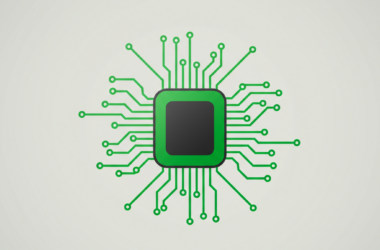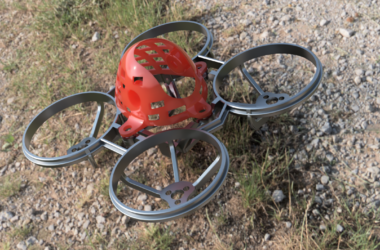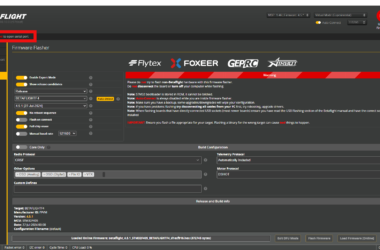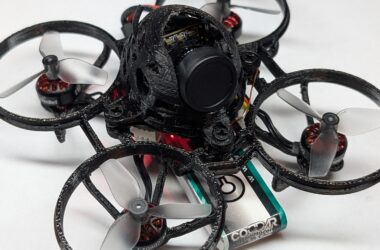When it comes to tuning Tiny Whoops, the ESC settings play a significant role in ensuring the drone performs at its best. After much trial and error, and hours of scouring YouTube, I found an incredible resource: Chris Rosser, an engineer and FPV enthusiast, who conducted a detailed investigation into the best ESC settings for Tiny Whoops. Using his recommendations, I fine-tuned my DIY drone to achieve exceptional performance.
Let’s dive into the key settings and how to configure them using the ESC Configurator.
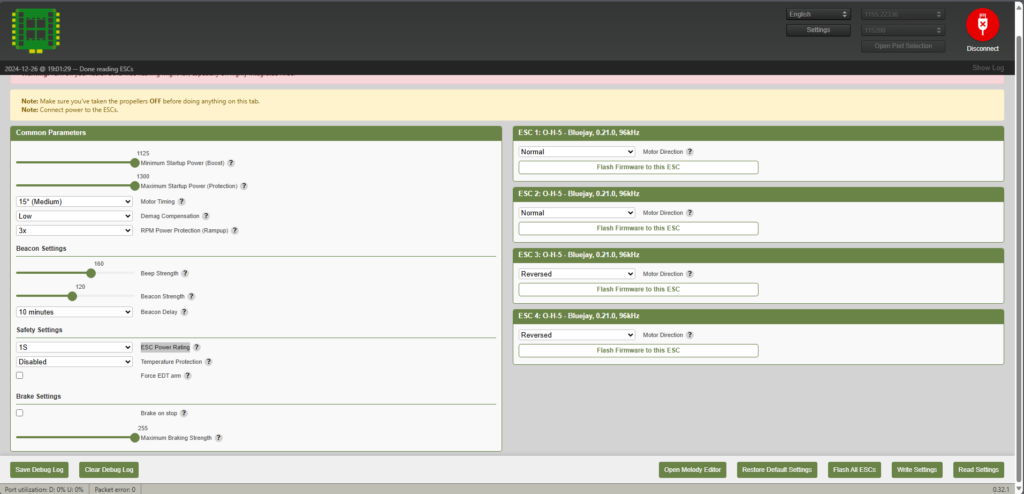
Flashing the ESC Firmware
To get started, I flashed all four ESCs simultaneously with Bluejay 0.21.0, the latest firmware version available. Based on Chris’s findings, setting the ESC frequency to 96kHz is ideal for Tiny Whoop motors. This higher frequency enhances efficiency, boosts thrust, and increases RPM. However, there’s a minor trade-off: reduced motor braking performance. For most users, though, the advantages far outweigh this downside.
Configuring the ESC Parameters
Once the firmware was updated, it was time to tweak the common parameters to align with the optimal recommendations. Here’s a breakdown of the settings:
Minimum Startup Power (Boost)
- Set this to the maximum value to ensure the tiny motors start reliably without stuttering.
Maximum Startup Power (Protection)
- Increase this to the maximum as well to provide adequate power during startup.
Motor Timing
- Adjust this to 15° (Medium). Increasing the timing beyond 15° doesn’t improve maximum RPM but reduces efficiency, so there’s no added benefit.
Demag Compensation
- Leave this at Low. This setting helps prevent motor desyncs, and for most Tiny Whoops, “Low” works perfectly.
RPM Power Protection (Rampup)
Set this to 3x. This configuration avoids large power spikes, maintaining efficiency without limiting motor acceleration.
Beacon Settings
These settings are particularly handy if you ever need to locate your drone by sound:
- Beacon Delay: Configure this to activate after 10 minutes.
- Beep Strength: Set to 160.
- Beacon Strength: Set to 120. Be cautious not to increase this too much, as excessively high values could damage your motors.
Safety Settings
- ESC Power Rating: Match this to your board’s battery setup. If you’re using a 1S board, set it to 1S. For boards supporting 2S batteries, choose 2S+.
- Temperature Protection: You can leave this disabled unless overheating is a concern during prolonged flights.
Final Touches and Testing
After making all these adjustments, remember to Write Settings to ESC to save your configuration. Then, take your Tiny Whoop for a test flight and enjoy the smoother motor response, improved efficiency, and enhanced overall performance.
If you’re interested in learning more about Chris Rosser’s findings, you can check out his detailed video here.




